This article was co-authored by David Schechter, MD. Dr. David Schechter is a physician in Culver City, California. With over 25 years of experience as a family and sports medicine physician, Dr. Schechter specializes in mind-body medicine, preventive medicine, and chronic pain. Dr. Schechter received his MD from New York University and is an attending physician at Cedars-Sinai Medical Center. He was named a Top Doctor by Los Angeles Magazine and Men's Health Magazine. He has also written several books, including The MindBody Workbook.
wikiHow marks an article as reader-approved once it receives enough positive feedback. In this case, 82% of readers who voted found the article helpful, earning it our reader-approved status.
This article has been viewed 641,630 times.
The hip is the largest joint in the human body. It supports most of the body's weight and is key to maintaining balance. Because the hip joint and hip region are so crucial to movement, arthritis and bursitis in the area can be especially painful. Chronic hip pain is common as the body ages, but there are various exercises and lifestyle changes you can introduce to treat a painful hip. Follow these steps to help reduce your hip pain.
Steps
Making Lifestyle Changes
-
1Get a diagnosis before anything else. It is really important to know what is causing your pain. See a doctor before you start doing any exercises or taking any medication. There are many reasons your hip could be in pain, including arthritis, back injuries, foot problems, bursitis, or an injury you've got while playing a sport. Always ask your doctor what you should and should not be doing, given the cause of your hip pain.
- If your doctor suspects there is a medical reason for your hip pain, they may request x-rays, possibly followed by an MRI or CT scan.
-
2Take pain-relieving medicine. Nonsteroidal anti-inflammatory drugs (NSAIDS) are best when soothing hip pain (which is most often caused by inflammation of the joints.) Ibuprofen, naproxen, or aspirin will both reduce inflammation and alleviate the pain for several hours. NSAIDS block the enzymes that create the chemicals that cause inflammation in the body.[1]
- If over-the-counter drugs like aspirin don’t seem to be having much of an effect, see your doctor. He or she may prescribe a more powerful pain-relieving medication. You should also always consult your doctor before introducing a new medicine (even one as common as aspirin) into your daily life.
Advertisement -
3Ice your joints. Holding ice to your hips will reduce inflammation of your joints. You should hold an ice pack to the affected area for 5-10 minutes several times a day.[2]
- If you find that the ice pack is uncomfortably cold, wrap it in a towel and then place it on the pained area.
- After you ice the affected area, wait for about an hour, then ice it again. Do this 3 or 4 times a day as needed.[3]
-
4Heat your joints if you have arthritis in your hips. Heating your joints can soothe the pain you feel. Consider taking a hot bath or shower, or soak in a hot tub if there is one available to you. You could also consider purchasing a hot pad that you can place directly on your hip.
- Do not use heat to soothe your joints if you have bursitis. Heat can cause hips affected by bursitis to actually become more inflamed.
-
5Get some rest. If you have injured your hip, the best thing you can do is to simply give your hip time to heal. Avoid anything that causes you to feel pain in your hip. Instead, grab an ice pack, a bowl of popcorn and watch some movies. You should give your hip a rest for at least 24 to 48 hours.[4]
- As you're resting, try to change your position every so often. It can aggravate your pain if you're lying in one position for a long period of time.[5]
-
6Avoid high-impact activities. If you are in severe pain, chances are you won’t feel like running or jumping anyway, but it is good to keep in mind that these activities should be avoided. High-impact activities will cause your joints to become more inflamed, thus causing your more pain. Instead of running, try taking a brisk walk, as walking has much less of an impact on your joints.
-
7Consider losing weight. The more your body weighs, the more weight your painful hip is burdened with supporting. Losing weight can help ease hip pain simply by removing some of that weight that stresses the cartilage and joints. Learn how to get lose weight here.
-
8Choose the right shoes. You should buy shoes that give you as much support as possible. Look for shoes that have great cushions, or have removable insoles so that you can add orthopedics. The sole should have good shock absorption, should limit pronation (turning or rotating the foot) and will evenly distribute pressure along the length of your foot.
- If you need corrective shoes, you can get these from specialty shoe shops or a from a podiatrist.
Exercising and Stretching
-
1Begin your day by exercising. Getting your blood flowing and loosening the joints can make the rest of your day much less painful. This is a particularly good thing to do if you have arthritis. Start your day by activating your hips with a bridge exercise.[6]
- Lie on your back on the floor with your legs bent. Your feet should be pressed firmly into the floor and should be hip-width apart.
- Raise your rear off the floor by pressing down through your ankles. Keep your abs firm and your knees aligned with your ankles. Your body should create a straight line from your shoulders to your knees. You should hold this position for three to five seconds, then slowly lower your rear back down to the floor. Repeat this process 10 times.
-
2Exercise in water. Swimming and aquatic exercises are a great way to strengthen your hips without putting too much pressure on them (as you do when you run.) Consider swimming laps or joining an aquatic aerobics class at your local gym.
- Using a jacuzzi or hot tub after exercise is also a good way to help loosen tight hips.
-
3Perform daily exercises. Again, always consult your doctor or physical therapist before you begin an exercise routine meant to ease your hip pain.
- Stand straight up with your feet ahead of you. Lift your right leg horizontally as far as is comfortable and return it. Do the same thing with your opposite leg. This exercise stretches your hip abductors.
-
4Strengthen the muscles of your inner thigh. Your inner thighs play a large part in supporting your hips. Weak inner thigh muscles can hurt even a healthy hip. Talk to your doctor before starting any new exercise routine.
- Lie on your back with your arms outstretched away from your body. Pick up a large exercise ball with your legs and lift your legs so they are perpendicular to the ground.
- Squeeze the ball using your inner thigh muscles 10 times. Repeat this process for two or three sets of 10 squeezes each.
-
5Strengthen your outer thigh muscles. Strong outer thighs can be very helpful when you are dealing with hip arthritis as they support some of the weight of your body.[7]
- Lie on the pain-free side of your body. It helps to lie on a carpet or yoga mat so that you are not just lying on the hard surface of your floor.
- Raise the leg which has the hip pain up six inches from the floor. Hold it in the air for two or three seconds, and then lower it back so that it is resting on your other leg (your legs should be parallel with each other and the floor.)
- Repeat this process of lifting, holding, and lowering 10 times. If possible, do this on the other side as well, but stop if it is too painful.
-
6Stretch your hip muscles. Speak to a physical therapist before you begin a stretching routine. Stretching can help ease hip pain, while also strengthening your hip muscles so that you can avoid future pain.
- Hip rotation stretch: Lie on your back with your arms by your sides. Bend the leg that you would like to stretch, placing your foot flat on the ground. Keep your other leg straight and on the ground with your toes pointing up. Rotate your bent leg out and away from your body. Do not push your leg any further than is comfortable, and if really begins to hurt, stop stretching it. Hold the stretch for five seconds and then bring your leg back so that your foot is flat on the ground again. Repeat this 10-15 times on each side.
- Hip flexion stretch: Lie flat on your back. Choose the leg you want to work on and then bend it so that your foot is flat on the ground. Wrap your arms around your bent leg, holding on to the shin area, and pull your leg towards your chest. Only go as far as your body will allow--if it begins to hurt, release your leg. Hold your leg against your chest for five seconds and then release. Repeat this process 10 to 15 times on both sides.
- Glute squeezes: Roll a towel into a tight cylinder. Lie on your back with both of your legs bent so that your feet are flat on the ground. Place the towel between your knees. Squeeze your knees together so that you are engaging your buttocks and inner thighs. Hold the squeeze for three to five seconds and then release. Repeat this 10 to 15 times.
Expert Q&A
-
QuestionWhat causes pain in the front of the hip?
 David Schechter, MDDr. David Schechter is a physician in Culver City, California. With over 25 years of experience as a family and sports medicine physician, Dr. Schechter specializes in mind-body medicine, preventive medicine, and chronic pain. Dr. Schechter received his MD from New York University and is an attending physician at Cedars-Sinai Medical Center. He was named a Top Doctor by Los Angeles Magazine and Men's Health Magazine. He has also written several books, including The MindBody Workbook.
David Schechter, MDDr. David Schechter is a physician in Culver City, California. With over 25 years of experience as a family and sports medicine physician, Dr. Schechter specializes in mind-body medicine, preventive medicine, and chronic pain. Dr. Schechter received his MD from New York University and is an attending physician at Cedars-Sinai Medical Center. He was named a Top Doctor by Los Angeles Magazine and Men's Health Magazine. He has also written several books, including The MindBody Workbook.
Family Medicine Practitioner If you injure your hip joint, the pain will likely be in your groin. If the pain is coming from the side of your hip, it could be a muscle or ligament issue, bursitis, or an injury to a gluteal muscle.
If you injure your hip joint, the pain will likely be in your groin. If the pain is coming from the side of your hip, it could be a muscle or ligament issue, bursitis, or an injury to a gluteal muscle. -
QuestionHow do you treat side hip pain?
 David Schechter, MDDr. David Schechter is a physician in Culver City, California. With over 25 years of experience as a family and sports medicine physician, Dr. Schechter specializes in mind-body medicine, preventive medicine, and chronic pain. Dr. Schechter received his MD from New York University and is an attending physician at Cedars-Sinai Medical Center. He was named a Top Doctor by Los Angeles Magazine and Men's Health Magazine. He has also written several books, including The MindBody Workbook.
David Schechter, MDDr. David Schechter is a physician in Culver City, California. With over 25 years of experience as a family and sports medicine physician, Dr. Schechter specializes in mind-body medicine, preventive medicine, and chronic pain. Dr. Schechter received his MD from New York University and is an attending physician at Cedars-Sinai Medical Center. He was named a Top Doctor by Los Angeles Magazine and Men's Health Magazine. He has also written several books, including The MindBody Workbook.
Family Medicine Practitioner Actual hip joint pain usually hurts in the groin, rather than the outside of the hip. If pain is coming from the side of the hip, it could be a muscle or ligament issue. It could also be a bursitis, which is inflammation of a sac just outside of what we consider our hip area. Also, there are a number of muscles in that area that can get injured or strained.
Actual hip joint pain usually hurts in the groin, rather than the outside of the hip. If pain is coming from the side of the hip, it could be a muscle or ligament issue. It could also be a bursitis, which is inflammation of a sac just outside of what we consider our hip area. Also, there are a number of muscles in that area that can get injured or strained. -
QuestionHow can I relieve the pressure in my hips?
 David Schechter, MDDr. David Schechter is a physician in Culver City, California. With over 25 years of experience as a family and sports medicine physician, Dr. Schechter specializes in mind-body medicine, preventive medicine, and chronic pain. Dr. Schechter received his MD from New York University and is an attending physician at Cedars-Sinai Medical Center. He was named a Top Doctor by Los Angeles Magazine and Men's Health Magazine. He has also written several books, including The MindBody Workbook.
David Schechter, MDDr. David Schechter is a physician in Culver City, California. With over 25 years of experience as a family and sports medicine physician, Dr. Schechter specializes in mind-body medicine, preventive medicine, and chronic pain. Dr. Schechter received his MD from New York University and is an attending physician at Cedars-Sinai Medical Center. He was named a Top Doctor by Los Angeles Magazine and Men's Health Magazine. He has also written several books, including The MindBody Workbook.
Family Medicine Practitioner If you're lying in one position for long periods of time, like watching television or using your laptop, try changing your position from time to time, and consider using a pillow to support your hips. Also, ice can be very helpful when you have pain from pressure on the outside of your hips.
If you're lying in one position for long periods of time, like watching television or using your laptop, try changing your position from time to time, and consider using a pillow to support your hips. Also, ice can be very helpful when you have pain from pressure on the outside of your hips.
wikiHow Video: How to Ease Hip Pain
Warnings
- Do not continue an exercise that hurts your hip further. If any of the muscle strengthening exercises or stretches listed above are painful, try different exercises or stretches.⧼thumbs_response⧽
- Do not heat a joint affected with bursitis. This can make inflammation worse.⧼thumbs_response⧽
- Though this article provides information pertaining to hip pain, it should not be taken as medical advice. Always consult your physician regarding the best way to treat your specific condition.⧼thumbs_response⧽
References
- ↑ http://www.rheumatology.org/Practice/Clinical/Patients/Medications/NSAIDs__Nonsteroidal_Anti-inflammatory_Drugs/
- ↑ https://www.nhs.uk/conditions/hip-pain/
- ↑ David Schechter, MD. Family Medicine Practitioner. Expert Interview. 15 July 2020.
- ↑ http://www.everydayhealth.com/hip-pain/hip-pain-home-remedies.aspx
- ↑ David Schechter, MD. Family Medicine Practitioner. Expert Interview. 15 July 2020.
- ↑ http://www.everydayhealth.com/hip-pain-photos/ways-to-relieve-hip-pain.aspx#/slide-2
- ↑ http://www.everydayhealth.com/hip-pain-photos/ways-to-relieve-hip-pain.aspx#/slide-7
About This Article
To ease hip pain, hold an ice pack against the affected joint for 15 minute intervals throughout the day. You can also take an anti-inflammatory pain-reliever, like aspirin, to reduce the inflammation. If you have arthritis, try taking a hot shower or bath to heat and soothe your joints. Alternatively, if your hip pain was caused by an injury, rest it as much as possible and avoid high-impact activities, like running. Instead, perform light stretches or go swimming to work your hip muscles without puting too much pressure on them. For tips from our Medical co-author on how to ease hip pain with exercise, read on!
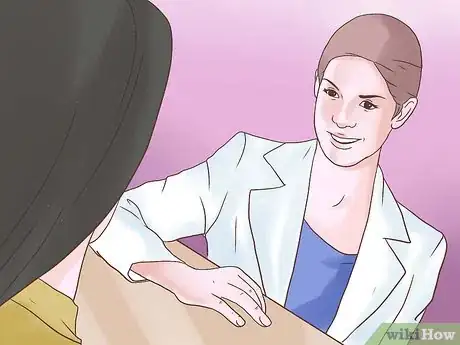
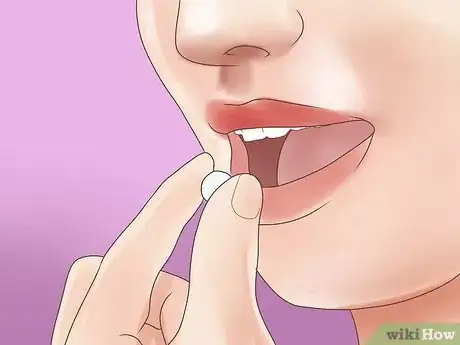
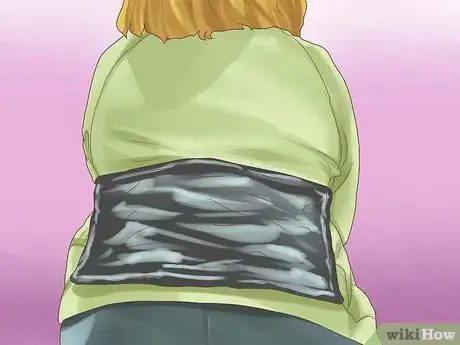

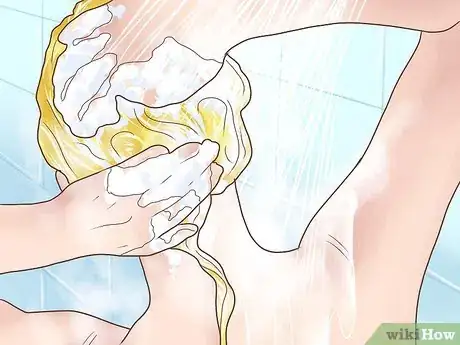
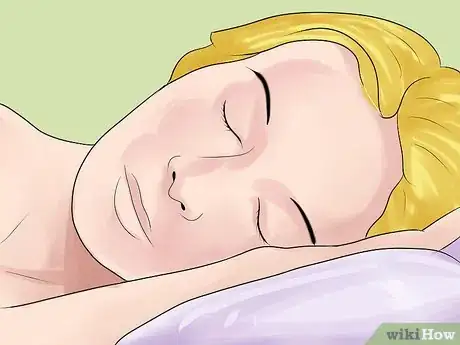
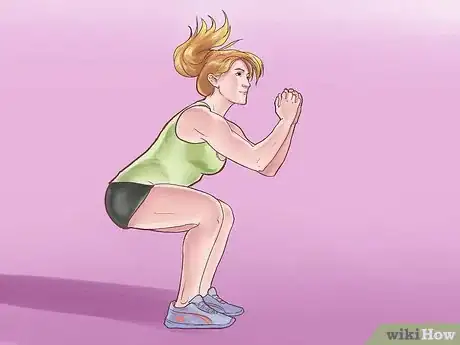
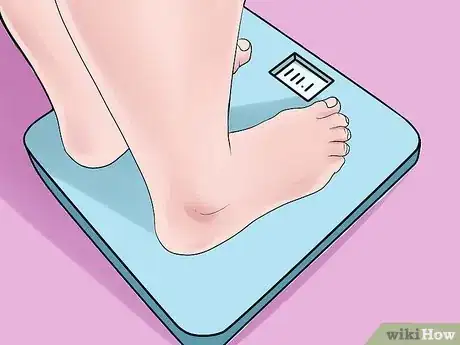
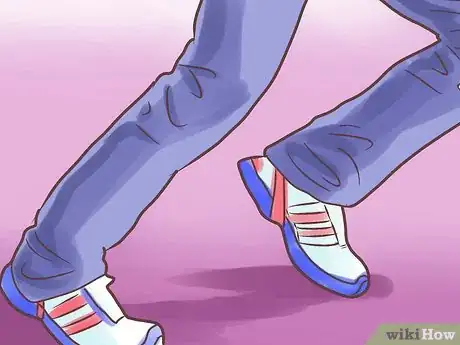
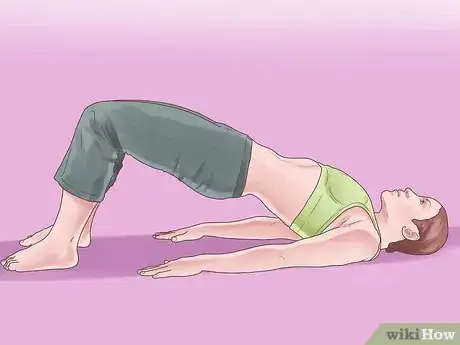

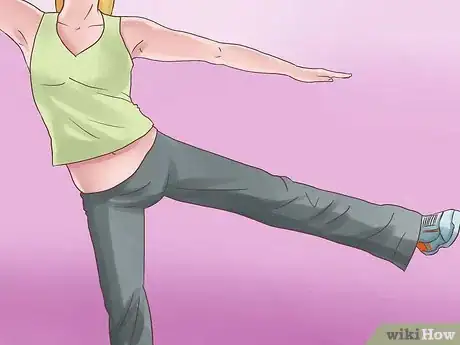
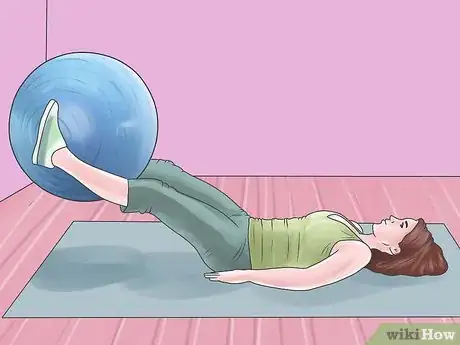
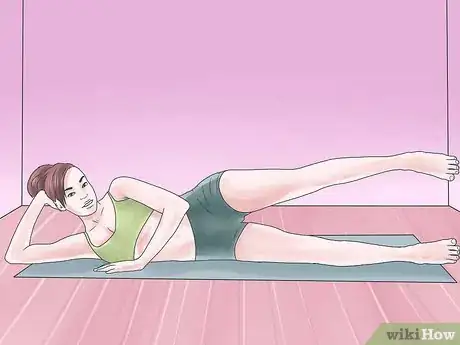


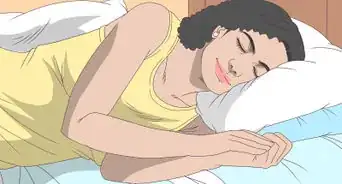

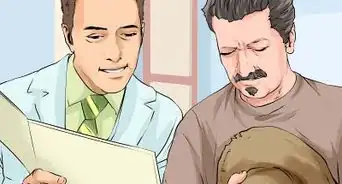


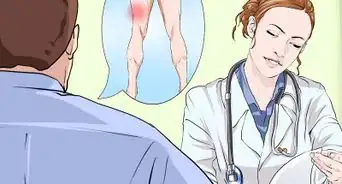




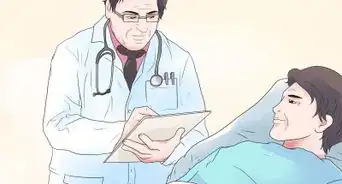
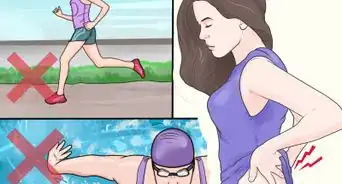
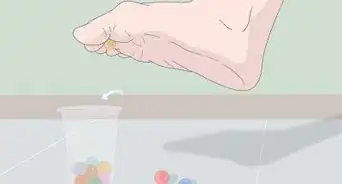











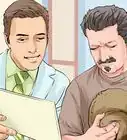



































Medical Disclaimer
The content of this article is not intended to be a substitute for professional medical advice, examination, diagnosis, or treatment. You should always contact your doctor or other qualified healthcare professional before starting, changing, or stopping any kind of health treatment.
Read More...